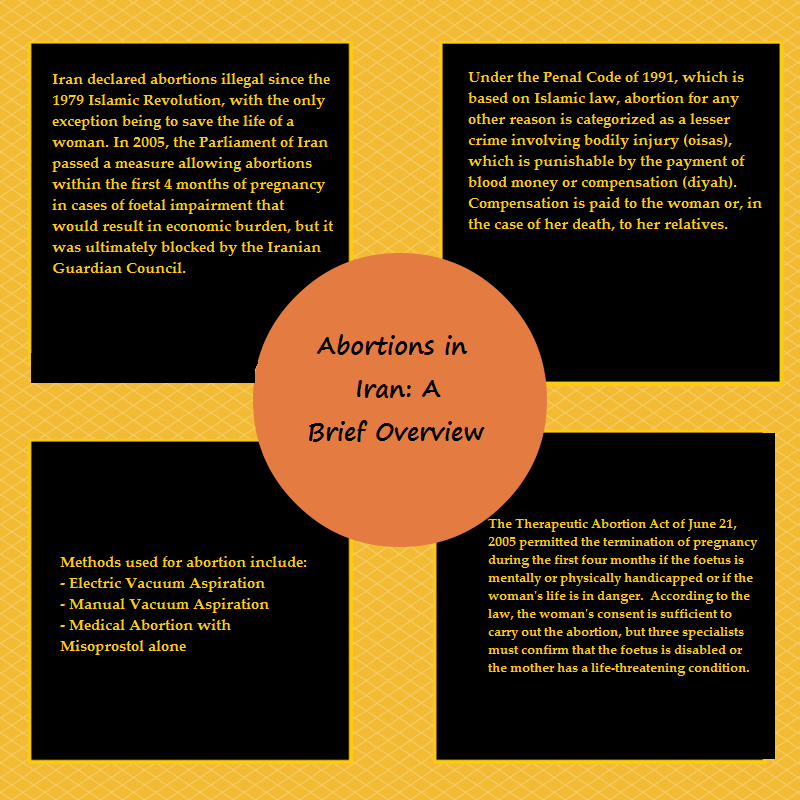Infograph: Abortions in Iran
Iran declared abortions illegal since the 1979 Islamic Revolution, with the only exception being to save the life of a woman. In 2005, though, the Parliament of Iran passed a measure allowing abortions within the first four months of pregnancy in cases of foetal impairment that would result in economic burden, but it was ultimately blocked by the Iranian Guardian Council. The Therapeutic Abortion Act of June 21, 2005 permitted the termination of pregnancy during the first four months if the foetus is mentally or physically handicapped or if the woman’s life is in danger. According to the law, the woman’s consent is sufficient to carry out the abortion, but three specialists must confirm that the foetus is disabled or the mother has a life-threatening condition. Under the Penal Code of 1991, which is based on Islamic law, abortion for any other reason is categorized as a lesser crime involving bodily injury (oisas), which is punishable by the payment of blood money or compensation (diyah). Compensation is paid to the woman or, in the case of her death, to her relatives. But, in July 2012, Iran’s government announced that it would no longer fund family planning programs, a dramatic reversal following 20 years of support. The change is especially abrupt for a country that has been lauded as a family planning success story, with thorough rural health services and an educated female population contributing to one of the swiftest demographic transitions in history. We can only imagine the consequences of this on the numbers of unwanted pregnancies.







